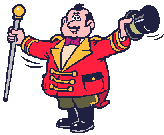Food Processing
The food processing industry is arguably the most influential industry on how how Americans live their lives today. Starting in the 1950’s, many of the foods we now eat regularly were beginning to be produced. Foods such as marshmallows, spam, gum and popsicles made their debut in the 50’s. It’s funny to think such things were only invented around 60 years ago. Today processed foods surround our everyday diet. In fact when I think about it, I cannot think of the last meal I had ruralizationwithout at least one processed food. And to think not even 100 years ago, people were eating purely homegrown, organic foods. So what happened? How did we get from such a healthy lifestyle to such a chemically dependent one? Just to clarify, processed foods are defined as any food that has been changed or altered in any way, shape or genetic form. Friedman School of Nutrition Science and Policy at the Tufts’ more precise definition is “any deliberate change to food pre-consumption”. This includes, but is not limited to, canning, dehydration, freezing and pasteurization.
Much of how we came to be so reliant on processed foods can be boiled down to a few main causes. The umbrella of causes, however, is WWII. Did you know that both M&M’s and Maxwell House Coffee were made for the WWII soldiers? The men overseas were experiencing many different foods and cuisines not found in the United States.When the war was over, with the gain of international trust between the United States and Europe, the international trade market rose. This made it easier for Americans, and especially veteran WWII soldiers, to experience vegetables and fruits all year, as opposed to seasonally. Pesticides were also introduced after WWII to encourage a higher crop yield.
During the war meat was rationed, so when the 50’s came and more opportunities arose for families to have meat, there was a high demand for meat. Dehydration had been a popular form of food processing during the war. Many people found both the appearance and taste unappetizing. So when the technique of freezing, introduced in the 1920’s, re-emerged after the war, families were grateful. In the year 1946, 400 million lbs of frozen veggies were produced. An astonishing comparison that exemplifies the growth of frozen food can be seen with Swanson’s frozen Chicken Pot Pie. In its first year, 1950, 500 units were sold; however, by its second year, over 10 million units were sold to consumers. This form of processing was widened to a more massive industry by the introduction of cold storage locker plants and more importantly, home refrigeration,
Thanks to the engineers in Texas, by the 1920’s refrigerators had become more and more common in the average family home. However, after WWII is when the true refrigerator industry began to boom. By the year 1950, 90% of American homes had some type of refrigeration system installed, due in large part to electricity being brought to even the rural areas of the United States. By the 1960’s refrigerated vending machines were becoming more and more common. The technical advancements made after WWII were incredible.
Among the technical advancements included was the microwave. The first microwave prototype was debuted in 1945 at a hefty 670 lbs and 62 inches tall. It costed a whopping $2,000 which is the equivalent to $20,000 today. By 1967 engineers had almost mastered the microwave. It sold for around $500 and was the first domestic microwave to hit the market. By the 80’s the microwave could be found in almost every home. Along with the microwave came frozen meals. Frozen foods were just one way women’s lives were made easier by the processed food industry.
The processing industry quickly realized that it must consider both itself and the consumer when making it’s product. Serious kudos to the geniuses behind this industry for making it what it is today. The engineers worked hard to figure out how to make each product cheaply but still easy for the consumer to, well, consume. Producers replaced sugar with high fructose corn syrup to lower production costs, however the taste was still the same. Twist off tops, aerosol foods such as rediwhip, aluminum cans, plastic milk cans and pull tab openers were all made to make it easier for the consumer. With the rise in women in the workplace after WWII, the processing industry focused on making products that made it easier for the mother and wives to be both working women and Susie Homemaker. Convenience was key. Swanson & Sons was the first company to make “TV dinners” or pre-made dinners in which wives could buy in advance and leave it in the fridge until dinner, then pop them into the oven for a few quick minutes and dinner was served. The TV dinner trays gradually changed from aluminum to plastic as microwaves became more popular which helped cheapen the cost of production. Hamburger helper was made in 1969 to help stretch a pound of hamburger meat in order to feed a large family. Women had less time to cook and garden, especially with the big feminism push. It was only right for the food industry to help women out.
Advertising agents have done a great job selling processed foods. Their ever-changing strategies include mostly targeting children and women. They realized that parents could only say no to their children for so long before the begging and tantrums got so out of hand that they finally gave in. And targeting women was easy. All they had to do was promote their product in a way in which made women believe that their motherhood and wifehood would be heightened by the purchase of their products.
The processed food industry has not always been seen in a positive light. In fact, in this day and age, when the phrase “processed food” is used it is usually followed by some negative comment about how these foods are making us fat. Starting in the 70’s, the industry began taking hits from journalists who were asking questions about the purity, health and wholesomeness of the foods being produced by the biggest processing companies. Many federal laws have been passed in order to regulate the production of processed foods resulting in the more recent requirement of the nutrition label since 1992. Most of the speculation in the early years of processed foods came from pasteurization. Developed by Cherry Burrell Corps in 1946, it allowed food to have a longer shelf life by sterilizing food with chemicals. By now all harmful chemicals have been banned; however, in the beginning of this process there were no regulations. The 1970’s started the production of “lite” products with the “gowing” american population. By 1981 Lean cuisine had made its debut, further selling the “processed and healthy” food market. My main resource for information came from a website celebrating its history as a processed food corporation. I chose this topic because I am an avid food consumer and I felt as though this was a very fitting topic
 |
 |
 |
 |
 |
- National Museum of History -This website gave me insight on how corporations would market their products and also how the invention of new technology helped the industry
- Baruch College Blog- I learned all about the new technological innovations and how they affected sales
- Texas State Historical Association- This website had much information on how researchers improved technology, with an emphasis on Texas engineers.
- Food Processing – I learned a lot about the history of processed food using this site. The pages I used were to celebrate the companies 70th birthday.
- Bar Harbor Foods- I used this to find out more about how WWII changed processed food. I also learned some history about how processed food corporations grew.
- Digital History- I found information about how WWII impacted foods and technology.


























